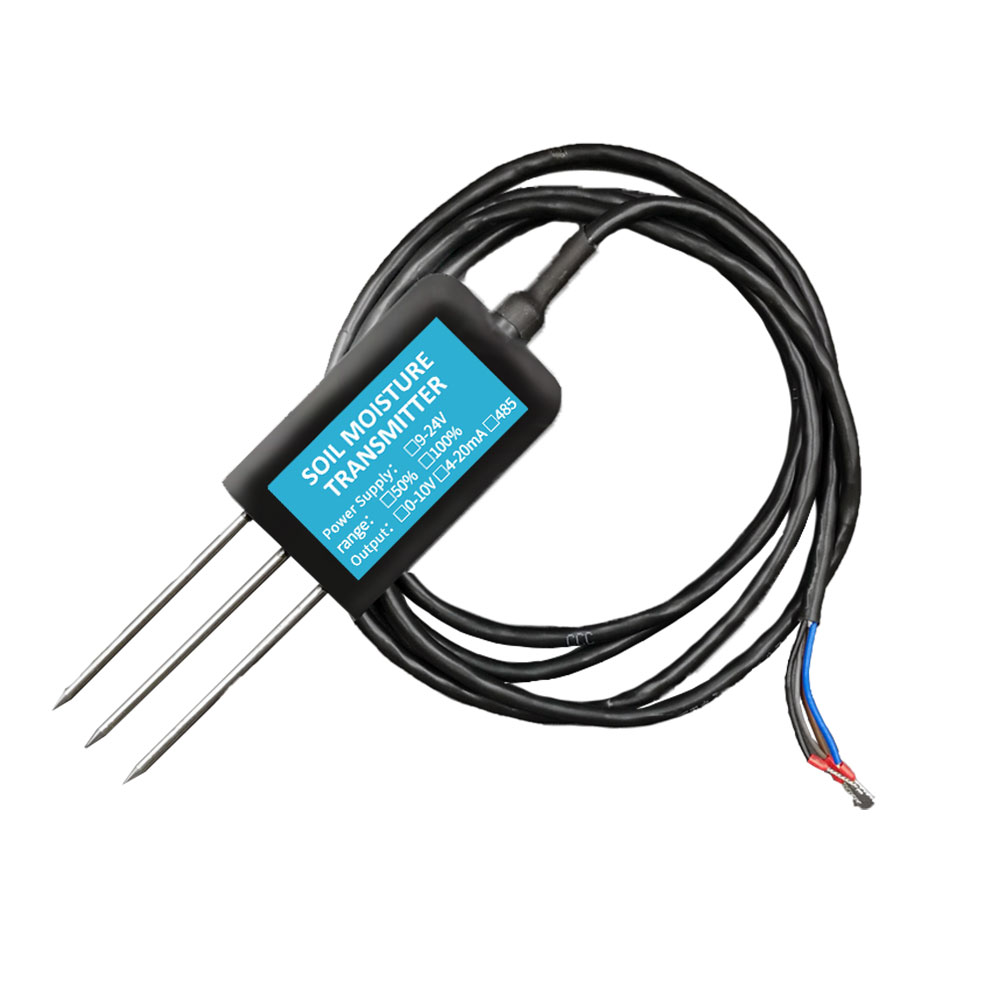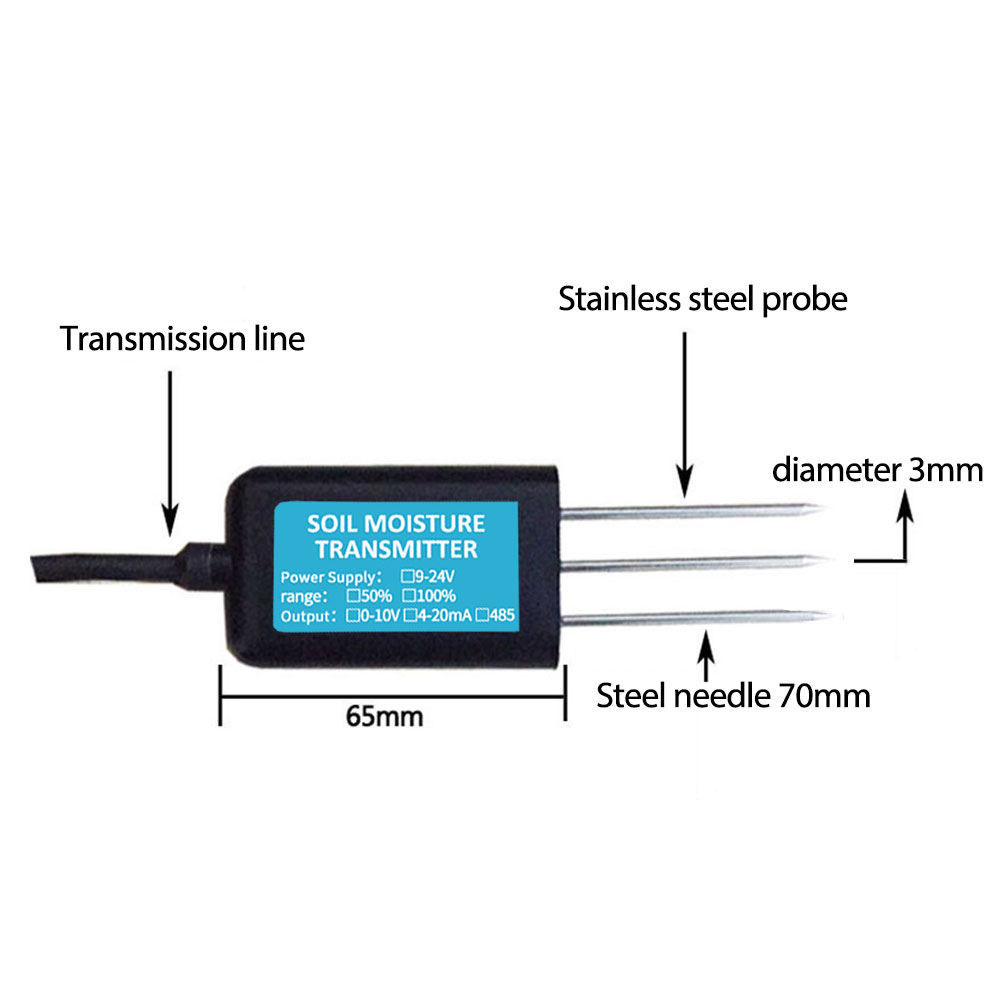Agriculture plays a vital role in feeding the world's growing population. As the demand for food increases, farmers face the challenge of maximizing crop yields while minimizing resource usage and environmental impact. In this pursuit, technology has proven to be a game-changer. One such technology that holds immense promise is soil sensors. These devices allow farmers to gain valuable insights into soil health and optimize agricultural practices. In this article, we will delve into the world of soil sensors, exploring their functionalities, benefits, and potential applications in enhancing agricultural practices.
Understanding Soil Sensors:
Soil sensors are electronic devices designed to measure and monitor various soil parameters. They provide real-time data on crucial factors like moisture content, temperature, nutrient levels, pH balance, and salinity. By accurately measuring these parameters, soil sensors offer farmers detailed information about soil conditions, enabling them to make informed decisions regarding irrigation, fertilizer application, and overall crop management.

Types of Soil Sensors:
There are several types of soil sensors available, each specializing in measuring specific soil properties. Some common types include:
a. Moisture Sensors: These sensors measure the amount of water in the soil, indicating whether irrigation is required. Capacitance sensors, tensiometers, and gypsum block sensors are commonly used for moisture measurement.
b. Temperature Sensors: Temperature sensors monitor soil temperature, which impacts plant growth and microbial activity. Thermocouples and thermistors are popular choices for measuring soil temperature.
c. Nutrient Sensors: Nutrient sensors determine the concentration of essential elements in the soil, such as nitrogen, phosphorus, and potassium. Electrical conductivity sensors and ion-selective electrodes are commonly used for nutrient measurement.
d. pH Sensors: pH sensors measure the acidity or alkalinity of the soil, providing insights into soil fertility. Glass electrodes and ion-selective field-effect transistors (ISFETs) are commonly used for pH measurement.
e. Salinity Sensors: Salinity sensors measure the salt content in the soil, indicating the suitability of crops for a particular area. Electrical conductivity sensors and salt concentration meters are utilized for salinity measurement.
These sensors can be installed at various depths within the soil profile to capture information about vertical variations in soil properties.
Benefits of Soil Sensors:
Soil sensors offer several benefits that contribute to enhanced agricultural practices:
a. Precision Irrigation: By providing real-time data on soil moisture levels, sensors enable farmers to optimize irrigation practices. This reduces water waste, lowers energy costs, and prevents issues such as overwatering or drought stress.
b. Nutrient Management: Nutrient sensors allow farmers to monitor soil fertility and adjust fertilizer application accordingly. This precision nutrient management reduces environmental pollution and saves costs by optimizing fertilizer usage.
c. Disease Prevention: Soil sensors can help detect early signs of diseases and pests by monitoring changes in soil moisture and temperature. This allows farmers to take proactive measures to prevent crop damage.
d. Environmental Sustainability: By facilitating precise irrigation and nutrient management, soil sensors contribute to sustainable agricultural practices. They minimize the risk of nutrient runoff, groundwater contamination, and greenhouse gas emissions, promoting ecosystem health.
e. Resource Efficiency: Soil sensors help farmers optimize resource usage by providing accurate data on soil conditions. This includes determining the ideal planting time, reducing water usage, and minimizing the need for chemical inputs.
Integration with Smart Farming Systems:
Soil sensors play a crucial role in smart farming systems, where data from various sensors is combined and analyzed to make informed decisions automatically. These systems utilize technologies like the Internet of Things (IoT), data analytics, and machine learning algorithms to collect, process, and interpret data from multiple sources. By integrating soil sensors with other sensing devices like weather stations and crop monitoring cameras, farmers can create a comprehensive and dynamic picture of their fields. This integration allows for real-time decision-making and supports precision agriculture practices.
Overcoming Challenges:
While soil sensors offer numerous benefits, there are challenges to consider:
a. Cost: The initial investment in soil sensors and their installation can be a barrier for some farmers, particularly those in small-scale or resource-limited settings. However, the long-term cost savings and increased efficiency often outweigh the initial expenses.

b. Maintenance and Calibration: Soil sensors require regular maintenance and calibration to ensure accurate data collection. Farmers need to allocate time and resources for sensor upkeep to ensure reliable operation.
c. Data Interpretation: Collecting data from soil sensors is one aspect, but interpreting and applying it effectively is another challenge. Farmers need sufficient knowledge and access to information about optimal soil conditions for different crops.
d. Standardization and Compatibility: Ensuring compatibility and standardization among different sensor brands and models can simplify data management and analysis for farmers who may use multiple sensors on their farm.
Future Developments:
The future of soil sensors holds exciting prospects for further transforming agricultural practices:
a. Advanced Sensor Technologies: Ongoing technological advancements will lead to more accurate, durable, and cost-effective soil sensors. Miniaturized sensors, wireless communication, and improved energy efficiency will make them more accessible and easier to deploy.
b. Multi-Parameter Sensors: Integrating multiple sensing capabilities into a single device will streamline data collection and reduce equipment costs. Multi-parameter sensors will provide comprehensive insights into soil health while reducing the number of separate sensors required.
c. Cloud-Based Data Analytics: Cloud-based platforms will enable farmers to store, analyze, and visualize data collected from soil sensors. This will facilitate data sharing, benchmarking, and predictive analytics, empowering farmers to make data-driven decisions.
d. Integration with Autonomous Systems: Soil sensors will be integrated into autonomous farming systems, where robots or drones equipped with sensing technology collect and analyze data. This integration will enable real-time decision-making and autonomous actions for precision agriculture.
Conclusion:
Soil sensors have emerged as powerful tools for enhancing agricultural practices. By providing valuable insights into soil health, these sensors allow farmers to optimize irrigation, fertilization, and crop management practices. Precision agriculture, enabled by soil sensors and other digital technologies, offers the potential to improve resource efficiency, environmental sustainability, and crop productivity. As technology continues to advance, the integration of soil sensors with smart farming systems and autonomous technologies holds immense promise for the future of agriculture. With the right investments, knowledge sharing, and policy support, soil sensors can play a pivotal role in ensuring food security while minimizing the environmental footprint of agriculture.







